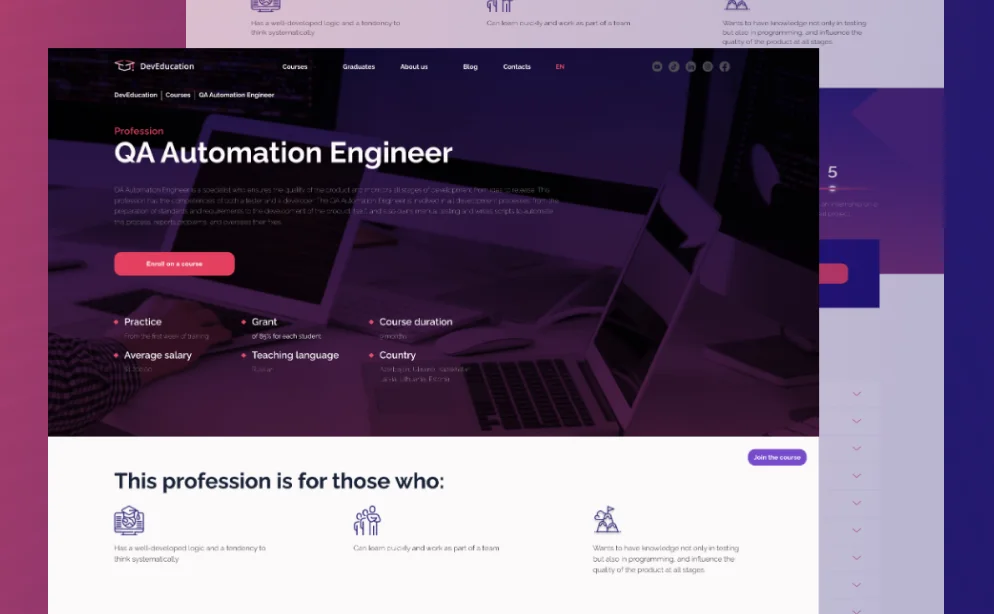For this, it’s best to classify and containerize workloads around a set of microservices. Use APIs to support interoperability and offer new services that were previously not supported. Another good practice is to ask your vendor critical questions about security, performance, size, and cost of the engineering team and ROI realized.
When combined with 5G, edge offers the ultimate user experience for rich media, bringing the vision of virtual reality/augmented reality (VR/AR), gamification, drone control, connected cars, and real-time collaboration to life. The rise of 5G has opened the gates to many exciting innovations and developments. However, the emergence of new, wireless devices, including IoT, bogs down the capabilities of the network, making it challenging to manage the enormous influx of virtual data.
How Is Edge Computing Revolutionizing Mobile Experiences?
Edge computing is becoming more popular because it allows enterprises to collect and analyze their raw data more efficiently. More than ever, organizations need instant access to their data to make informed decisions about their operational efficiency and business functions. When appropriately used, edge computing has the potential to help organizations improve safety and performance, automate processes, and improve user experience. But the choice of compute and storage deployment isn’t limited to the cloud or the edge.
![]()
Unless a company partners with a local edge partner, setting up the infrastructure is costly and complex. Maintenance costs are also typically high as the team must keep numerous devices at different locations in good health. Fog computing refers to decentralizing a computing infrastructure by extending the cloud through the placement of nodes strategically between the cloud and edge devices. For building, deploying, and managing container-based applications across any infrastructure or cloud, including private and public datacenters or edge locations, choose Red Hat® OpenShift®.
What Are the Types of Cloud Computing and Cloud Services
Edge computing is defined as the practice of processing and computing client data closer to the data source rather than on a centralized server or a cloud-based location. This article explains edge computing in detail and shares some useful best practices for edge computing in 2022. Telecom providers increasingly run their networks with network functions virtualization (NFV), using virtual machines running on standard hardware at the network edge. An edge computing strategy enables the providers to keep the software at tens of thousands of remote locations all running consistently and with uniform security standards.
- Device edge is the physical location of where edge devices run on-premises (cameras, sensors, industrial machines, etc.).
- Edge computing solves this problem by bringing processing closer to the device that generates data.
- Only the result of that computing work at the edge, such as real-time business insights, equipment maintenance predictions or other actionable answers, is sent back to the main data center for review and other human interactions.
- FortiNAC also gives you the ability to automate how your system responds to threats.
- We’re the world’s leading provider of enterprise open source solutions—including Linux, cloud, container, and Kubernetes.
- Together, they can work to provide productive solutions based on data collection and the goals and usage of different organizations.
In many cases, the computing gear is deployed in shielded or hardened enclosures to protect the gear from extremes of temperature, moisture and other environmental conditions. Processing often involves normalizing and analyzing the data stream to look for business intelligence, and only the results of the analysis are sent back to the principal data center. Edge computing emerged as a revolutionary tool to address the rising demand for real-time data processing. By enabling data processing at the edge of the network, closer to where it’s generated, edge computing significantly reduces latency and bandwidth use. Edge computing and cloud computing are two different approaches to computing.
What Is an Edge?
An October 2019 report by IDC predicts that by 2023, more than 50% of the newly deployed infrastructure will be in increasingly critical edge locations rather than corporate data centers, up from less than 10% today. Edge computing could be a game-changer for the banking and financial sector. It is a well-known fact that banks hold vast amounts of personal data that require higher bandwidth capacity and storage space for safekeeping. Moving data processing close to banks could generate faster and secure banking experiences for customers. Banks can also utilize edge computing to analyze ATM video feeds in real-time and guarantee additional safety. Infrastructure such as oil rigs, mining, and gas units require continuous monitoring to prevent dangerous events.

That way, for example, equipment can receive standardized software updates and share filtered data that can help improve operations in other factory locations. Edge computing is a distributed computing framework that brings enterprise applications closer to data sources such as IoT devices or local edge servers. This proximity to data at its source can deliver strong business benefits, including faster insights, improved response times and better bandwidth availability.
Career Masterclass: Top 5 High-Paying Cloud Computing jobs and How to Land Them in 2024
Jerome Hardaway is a senior software engineer at Microsoft, where he works in Industry Solutions Engineering. Air Force veteran and the executive developer of Vets Who Code, a tuition-free, open source, coding-immersive non-profit that specializes in training veterans. FortiNAC also gives you the ability to automate how your system responds to threats.
A company uses mobile edge computing infrastructure such as 5G networks and 5G-based mobile cloud computing services to develop, deploy, and scale ultra-low-latency applications. By bringing computation and data storage closer to the sources of data, edge computing can reduce latency, improve bandwidth efficiency, increase reliability, enhance security, and greater control. Edge computing works by essentially bringing computation and data storage closer to the sources of data. Edge devices typically process data locally and only send the most important data to the cloud, reducing bandwidth and latency. They are deployed, for example, in 5G networks and are capable of hosting applications and caching content close to where end-users are doing their computing. With this topology, the data does not have to travel all the way to a remote data center for the edge device to function properly.
How does edge computing work?
How does building edge computing software differ from writing other cloud applications, what do you need to know to get started, and does Microsoft’s definition hold up in the first place? The ReadME Project Senior Editor Klint Finley gathered three experts what is embedded systems to answer these and other questions. Edge computing works by processing data right where it’s needed, close to the devices or people using it. This means data is analyzed and decisions are made on the spot, like on a user’s device or an IoT gadget.
Contrary to popular belief, edge and cloud are not fighting among themselves for the top spot. Alongside cloud, edge computing can boost an organization’s digital transformation journey. Implementing edge in isolation is not ideal — when implemented together, edge and cloud can effectively scale business operations. Utilizing edge computing and cloud as a combination can lead to positive results, especially in the case of large-scale digital transformations.
Retail Edge: A Modernized Edge Architecture for Retail
An example includes a partnership between AWS and Verizon to bring better connectivity to the edge. In the past, the promise of cloud and AI was to automate and speed innovation by driving actionable insight from data. But the unprecedented scale and complexity of data that’s created by connected devices has outpaced network and infrastructure capabilities.
Banks may need edge to analyze ATM video feeds in real-time in order to increase consumer safety. Mining companies can use their data to optimize their operations, improve worker safety, reduce energy consumption and increase productivity. Retailers can personalize the shopping experiences for their customers and rapidly communicate specialized offers. Edge computing eases strain on the cloud or centralized computing by pushing the processing power to the edge. Edge computing topology has compute and storage resources close to the user or data sources to process, filter, and analyze data and send the results right back to the user in near real time.
What Is Edge Computing?
Traditional cloud setups are vulnerable to distributed denial of service (DDoS) attacks and power outages. As edge computing distributes processing and storage, systems are less prone to disruptions and downtime. Device edge is the physical location of where edge devices run on-premises (cameras, sensors, industrial machines, etc.). An IT edge is where end devices connect to a network to deliver data and receive instructions from a central server, either a data center or the cloud. While this model worked in the past, modern devices generate so much data that companies require expensive equipment to maintain optimal performance. Edge devices locally store and process data and work with edge data centers to overcome any intermittent connectivity issues.



